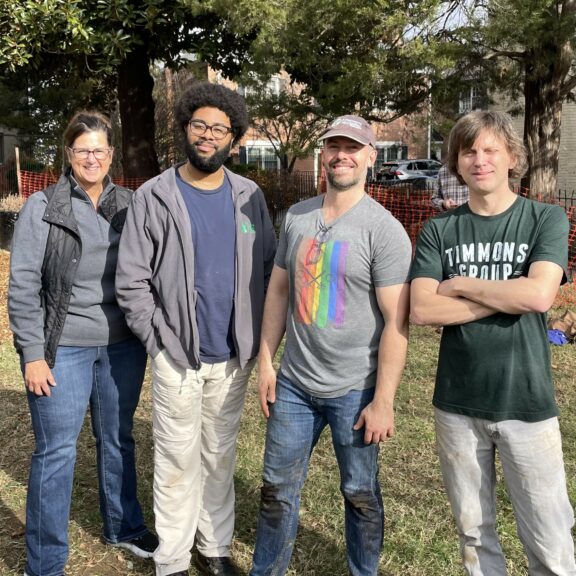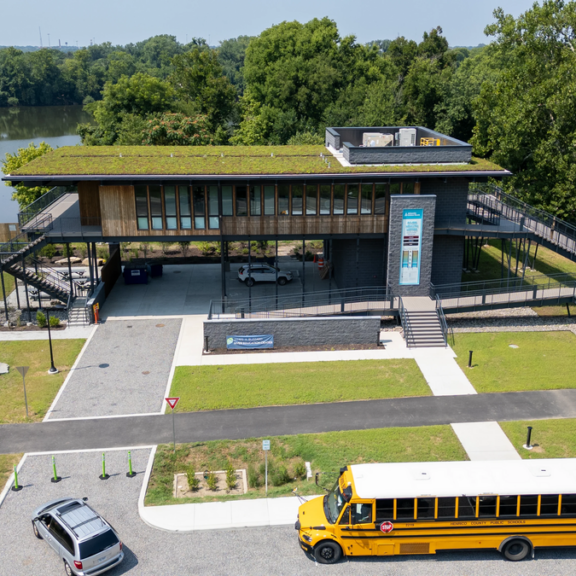“As it turns out, when you change the Earth for a living like we do, you have the opportunity to design with the Earth in mind.” That quote comes straight from our Sustainability web page. And it’s there because we wholeheartedly believe it.
We’re committed to responsible protection and improvement of our Earth. What does that mean? Well, as engineers and designers, we’ve built environmental stewardship into the work we do every day. And at Timmons Group, we believe in the power of engineering the Earth to help make the world a better place. Our sustainability footprint is larger than just our workspaces, so with projects like multi-sport complexes and roadway interchanges, our impact on the world is much more than what happens behind our office doors.
We would be remiss if we didn’t acknowledge that the concept of sustainable land development and green infrastructure isn’t new. Really, the idea that the ever-changing man-made world around us needs a sustainability ‘overhaul’ has been around since the mid-20th century. So, what can we do as an industry and as a community to speed up our sustainability mindset while slowing down our environmental impact?
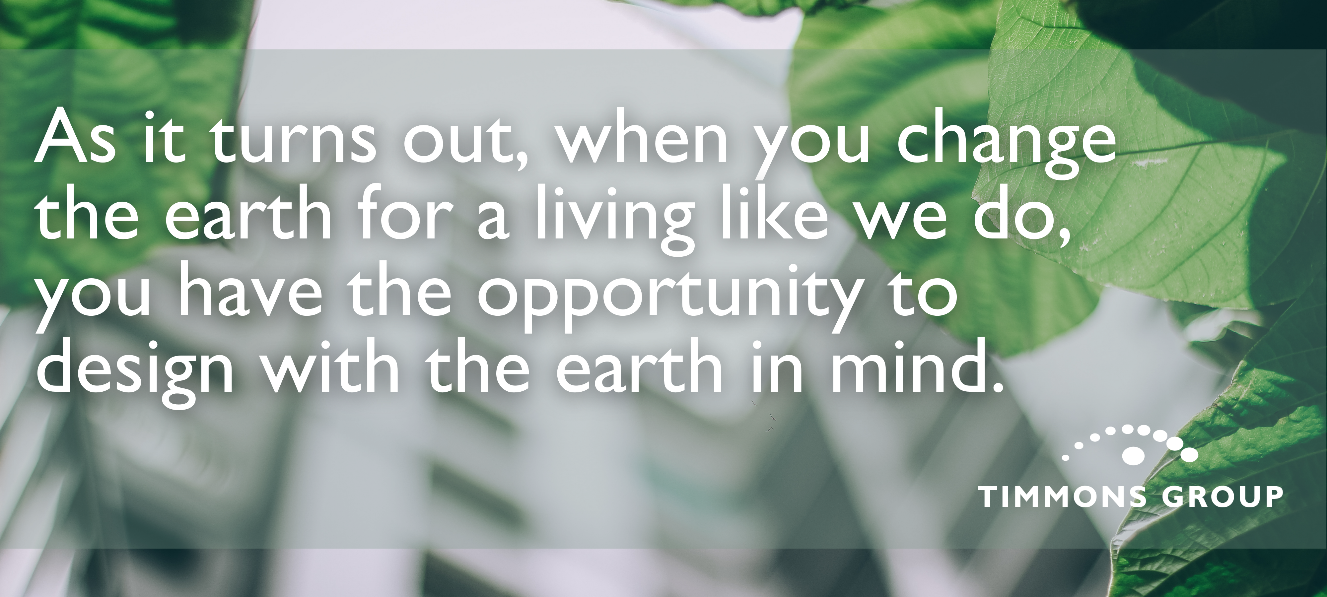
Part of our commitment to sustainable design is welcoming people into the firm who not only share our enthusiasm but also bring a level of expertise in their field, which is why we were ecstatic when Bryan McKnight joined our D.C. landscape architecture practice in June of last year.
We sat down with Bryan to capture his thoughts on green infrastructure and to help us answer some of the questions we had about sustainable landscape architecture. As a landscape architect, Bryan works with our growing landscape architecture and stormwater groups to bolster the significance of green design in our projects. He comes to us loaded with expertise from the nonprofit world where he worked on projects throughout D.C. metro.

In a previous nonprofit-based role, Bryan took on a green infrastructure position where he educated the community about ways to make sustainable and long-lasting impacts on their immediate environments through outreach. “Education and outreach are a huge component of the projects that I manage too. The reality is that you can treat stormwater as much as you want, but if people don’t know about it, you’re really limiting your impact,” he continued.
Bryan recalls an experience that’s helping him translate those nonprofit project outcomes into his current project management. “We provided tools like permeable pavers… basins to help participants of the program (RiverSmart Communities) better respond to their on-site stormwater problems and demonstrate to their neighbors how to do the same.” Certain tools can be difficult to access, so Bryan’s focus on community outreach is a great starting point for a lot of neighborhoods.
D.C. is the first LEED Platinum city in the U.S., and Bryan is working diligently to continue providing expertise and designs that help keep it that way. “D.C. has really embraced green infrastructure as a way of accomplishing those water quality and quantity goals, and Timmons Group’s involvement in local projects is a big step in that same direction,” Bryan said.
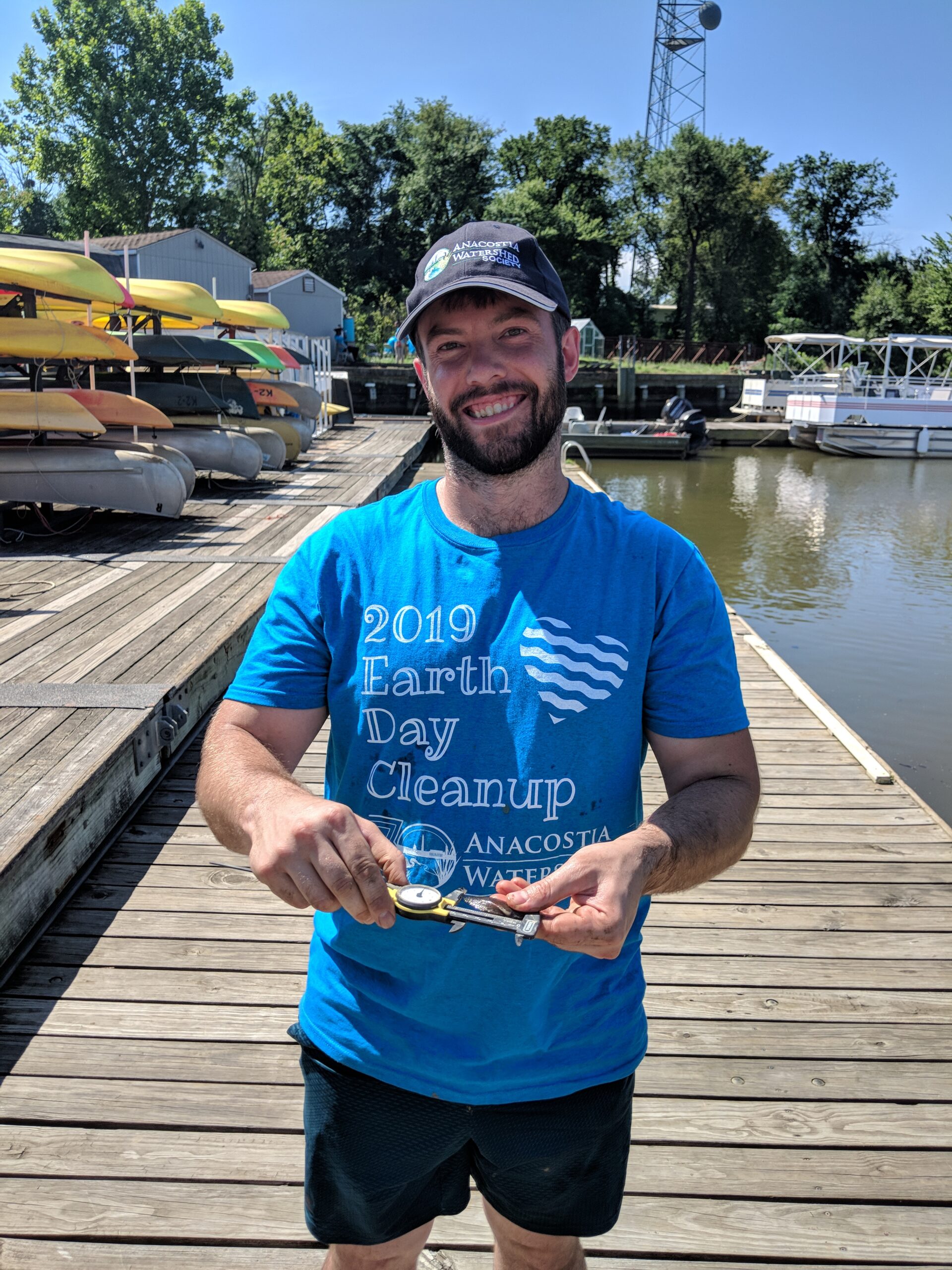
Bryan measures mussels at a water quality project site.
Since joining the firm, Bryan is taking on the D.C. region’s sustainability needs from a different perspective. He’s already put his sustainability touch on renewable energy farms, shopping centers, industrial areas, community parks, road improvements, and university campuses. We typically think of sustainable design as including environmentally friendly energy consumption, land clearing, building, water conservation, and maintenance practices. In our conversation, Bryan also reminded us of the importance of water quality and quantity in his designs.
“When we think about water quality, we often think about physical pollutants or sediment. But we need to be thinking about temperature too,” Bryan said. “Because if asphalt or impervious services get hot, they release toxins. And when there isn’t an intermediary between those surfaces and the water body that they’re ultimately flowing into, it’s bad for fish and wildlife.”
High temperatures don’t only affect the heat of a surface. Freshwater fish in our regions can’t tolerate water that’s hotter than 70 degrees, so if runoff is coming straight off hot asphalt, it can raise the temperature of a body of water, and that’s dangerous for our ecosystems and organisms that live there. Slowing water down also cools it off, so Bryan says that designing pipes, sidewalks, and curbs properly can help ease the temperature tension as well.
“I think the ideal is that all our bodies of water should be fishable and swimmable,” he said. Of course, we know he’s not talking about certain kinds of water bodies like drinking reservoirs or water treatment facilities. But we should be able to rely on the designers and contractors that build around our bodies of water to ensure that our manmade interactions aren’t intruding on our environment’s natural intention: To provide safe and natural environments for wildlife and reliable experiences for humans.
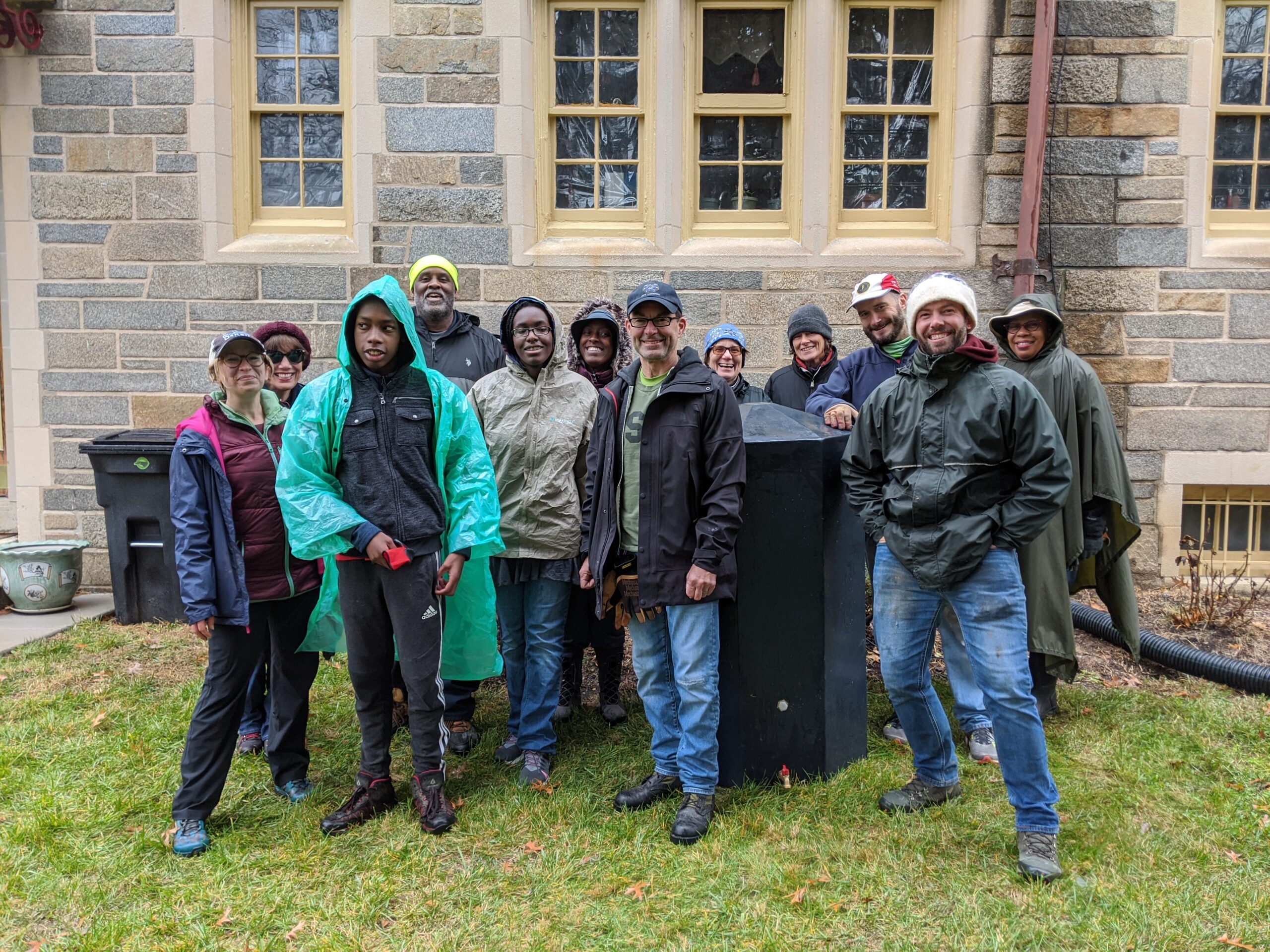
Bryan works with a local community in D.C. to provide a rain barrel installation workshop.
That notion of sustainability isn’t new to Bryan. He actually grew up with parents who built sustainable practices into his upbringing. In our conversation he recalled, “I grew up with these values baked in, it was always a part of my childhood.” He said that between conscious recycling, the installation of solar panels on his parent’s home, and the use of rain barrels to water their property’s vegetation, sustainable practices were never a question. “My dad was a builder, and he was really into sustainability. His most recent project was a natural pool that uses plant life instead of chlorine to filter the water. We actually piped water from the roof to fill the pool,” he chuckled.
His childhood had such an impact on his world views that Bryan decided to make a career out of his passion for sustainability. “I really liked the intersection between sustainable landscape design and environmental issues, so I chose to become a landscape architect.”
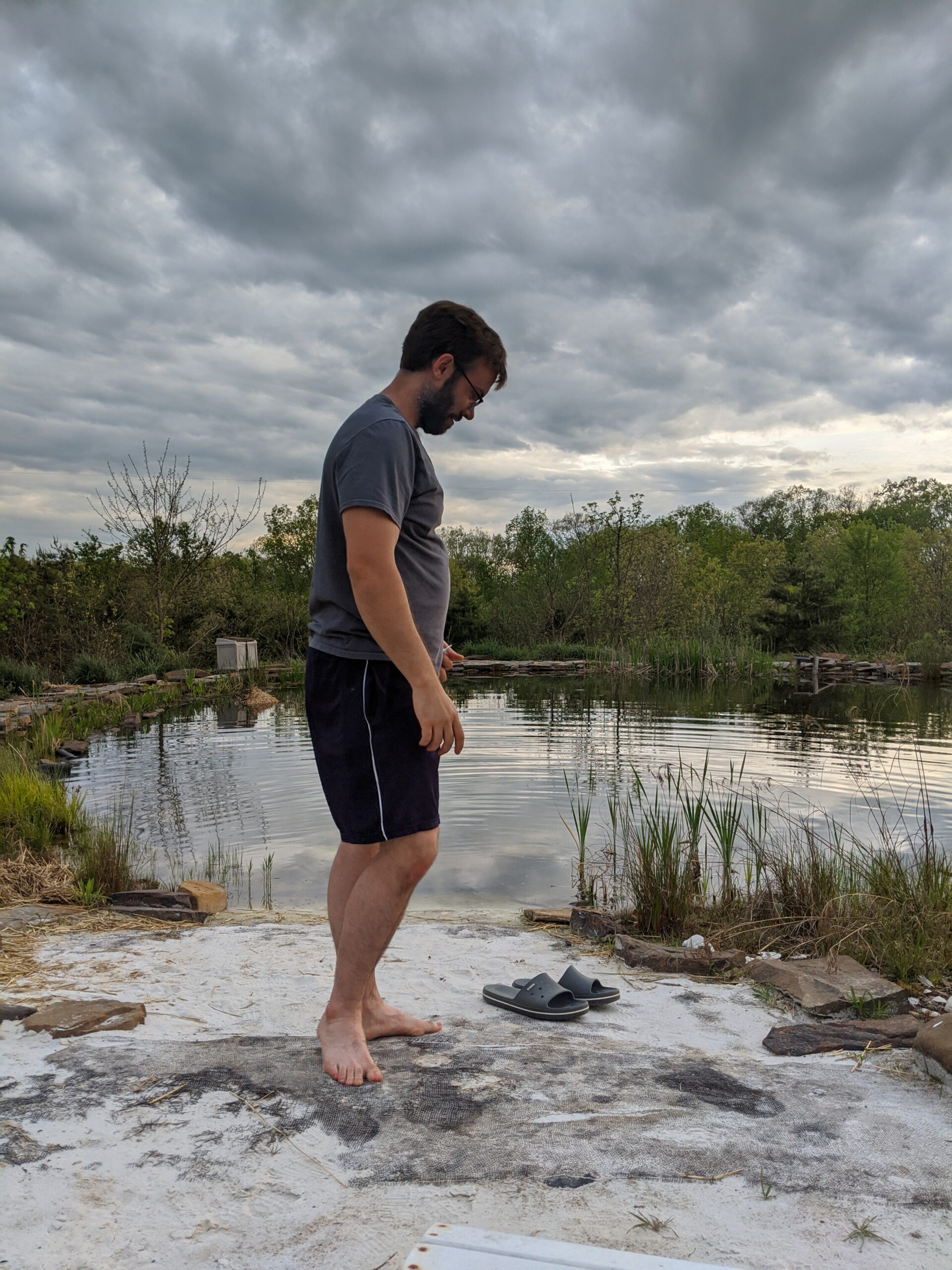
Bryan checks on the health of his plants around a natural pool he and his family created.
The conversation surrounding sustainability in landscape architecture and stormwater is a big one, but Bryan says that when you link the messaging behind “fishable and swimmable” it’s more meaningful for communities and the outcomes seem more tangible. “It’s so easy to get lost in the weeds with the big picture conversation of climate change, so it can be overwhelming to consider what we as an immediate community can do to help. But at the end of the day, it’s the small pieces that we can all do together to make a larger impact as a whole.”
Bryan recently passed the Chesapeake Bay Landscape Professional Certification, an accolade that heightens his already impressive field expertise. CBLP is a certification for landscape professionals that emphasizes sustainability. Core pillars of the certification are stormwater best management practices and conservation landscaping with native plants.
Interested in working with our team? Learn more about our landscape architecture services on our website.

